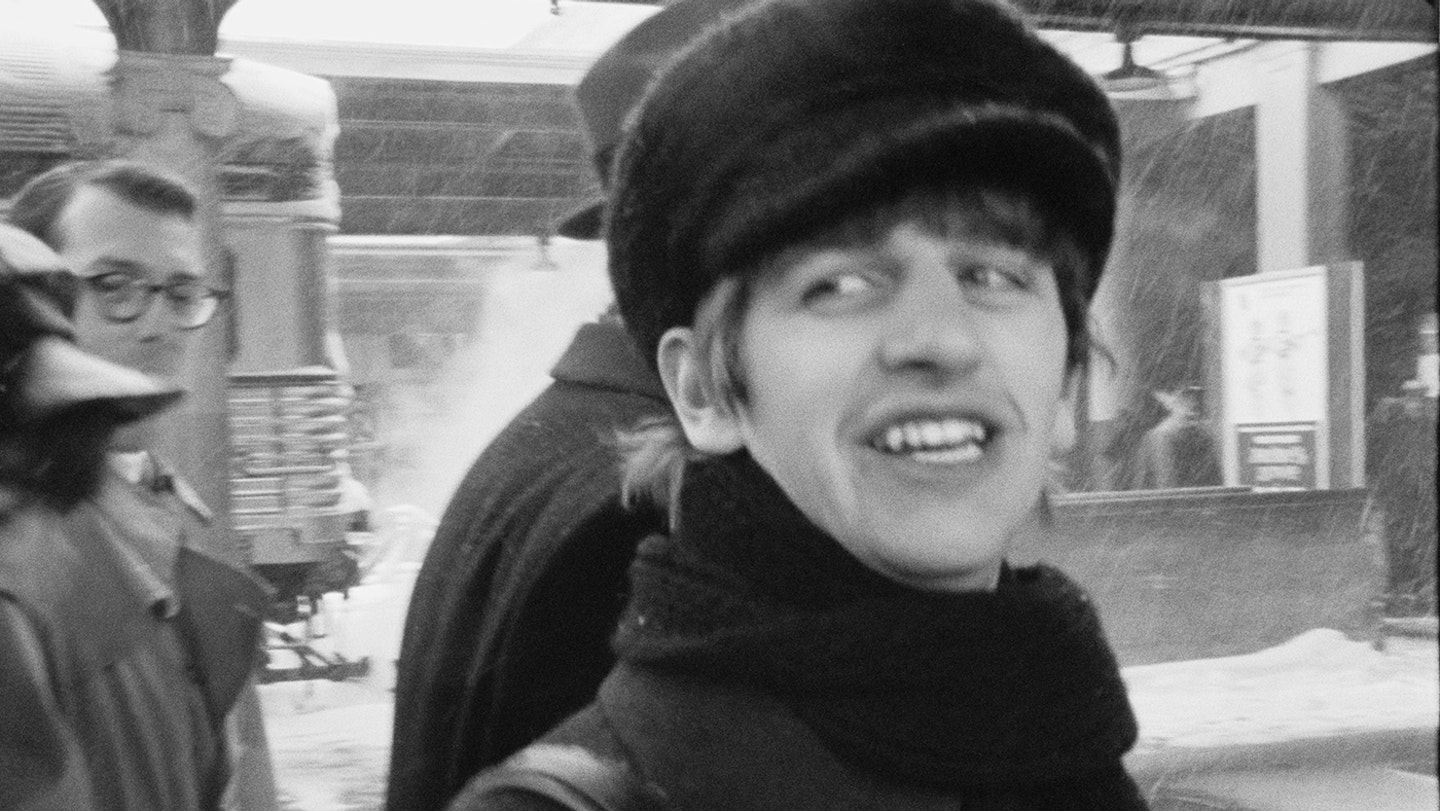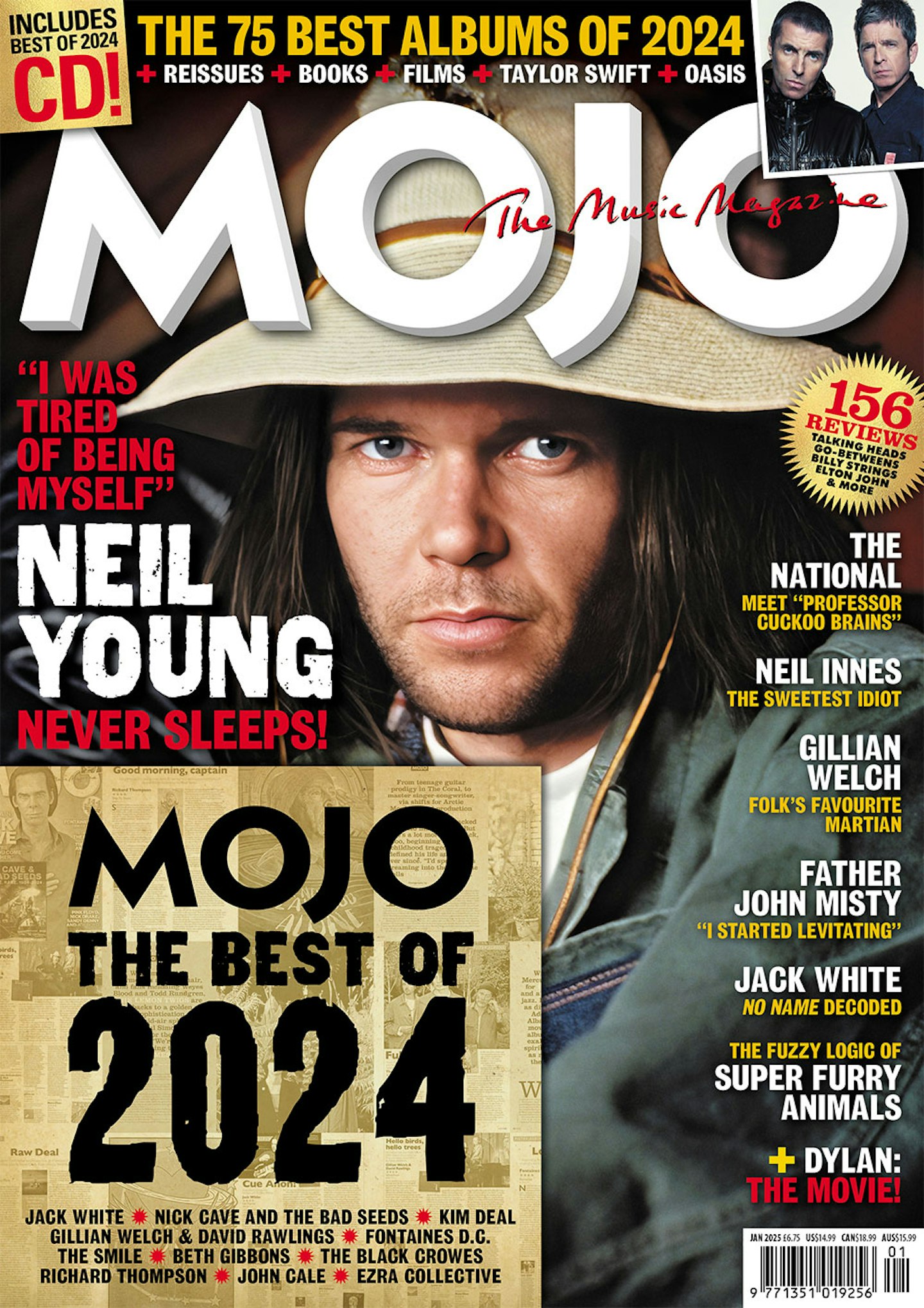Beatles '64
★★★
Dir. David Tedeschi
Disney+

There are two films vying for attention in David Tedeschi’s Beatles ’64. One is a thrilling verité document of the Fab Four’s journey across America during fourteen days in February of that year and the other is a more ideologically confused affair; a talking-heads documentary about the impact Lennon, McCartney, Harrisonand Starr had on the regular Americans who witnessed them, and how, in some way, The Beatles were a much-needed balm, a message of love and innocence for a country still coming to terms with the assassination of President John F. Kennedy less than three months earlier.
-
READ MORE: The Beatles 1964 US Albums In Mono Reviewed
The film begins with a whistle-stop history of JFK’s presidency from election to assassination. We pause for a lachrymose John Lewis cover version of All My Loving by Elaine Kim before cutting to footage of The Beatles on a Pennsylvania Railroad express train, travelling between New York and Washington, and being recorded by the documentary filmmaking brothers, Albert and David Maysles for a 1964 Granada TV special.
That cut to archive footage is admittedly a glorious moment; the Maysles documenting the quartet’s quick-fire Liverpudlian wit while the Fabs marvel at the brothers’ modern recording equipment. “Haha, I can hear myself!” says Lennon, with grinning glee. It’s music revolution and cinema revolution happening in unison and, of course, you think, Oh, good. Now we’re with The Beatles. We’re on a journey. Let’s stay with them.

But it’s not to be. As an inter title explains, “While Beatlemania was raging across Europe, most of America had yet to discover The Beatles. This film features personal stories of people who were there.” The first personal story we get is from American author and satirist Joe Queenan, tearing up as he describes hearing She Loves You for the first time with that familiar platitude, “It’s like the light came on, after total darkness.” Was it also like going from black-and-white to Technicolour, Joe?
This is the problem with so many of the talking heads interviews in this doc. Whether it’s Smokey Robinson, Ronald Isley, or even the surviving Beatles themselves, they add so little to the story, little we haven’t already heard in other Beatles documentaries. Tedeschi, an editor on previous Martin Scorsese documentaries such as Rolling Thunder Review, Pretend It’s A City and George Harrison: Living In the Material World, clearly has a narrative in mind but it’s difficult to discern what it is, especially when he cuts from 1964 to 1967 footage of Marshall McLuhan’s talking about the electronic media revolution or Leonard Bernstein listening to She Said She Said on the 1967 documentary Inside Pop.
Whatever purpose these clips serve their main effect is to break the flow of the film, dismantling any coherent sense of time, place or forward movement. I watched with my partner and she never had any idea of where the Beatles where or how long they were there for: “Fourteen days? It felt like they were there for months!”

By far the best new interviews in Beatles ’64 are with the women. The Maysles were exceptional filmmakers, willing to interview and give agency to the hundreds of female fans waiting for The Beatles outside New York’s Plaza Hotel. Tedeschi’s smartest decision is to speak to some of those surviving fans today. These women, now in their seventies and early eighties, talk about The Beatles with a curious wisdom and profundity. They explain everything from how The Beatles’ appeal was in their gentleness (“words about love and ‘hold my hand’”) to the arrival of puberty changed which Beatle you loved (“I went from George to John”). You could watch a whole documentary about these women.
Or you could just watch a travelogue of the Fabs’ fourteen day odyssey compiled from footage shot at the time. Of course, you might say we already have that film in the shape of the Maysles’ original 70-minute documentary, premiered in 1964 as What's Happening! The Beatles In the U.S.A and later reedited and reissued with an extra thirteen minutes as 1991’s The First US Visit. But for one, that film no longer appears to be in official circulation and, for another the Maysles shot over twenty hours of film during their time with the Fab Four and that doesn’t even account for the extra footage recorded by national and regional news reporters and fans. Imagine what you could do with that. The small percentage of this historical footage that makes it into Beatles ‘64 is, of course, glorious, from Paul McCartney suddenly hearing the The Beatles on his tiny little Pepsi transistor radio, to Lennon on the train to Washington quietly saying to himself, “This is what our film should be.” (Filming began on A Hard Day’s Night two weeks later). It’s The Beatles confronting the true magnitude of their fame for the first time and it’s hypnotic viewing.
The truth of the matter is that we have been spoiled, specifically by Peter Jackson’s 2021 documentary Get Back which changed our expectations of what a Beatles documentary could be. If we were willing to hang with John, Paul, George, Ringo, Yoko, Billy, Mal and the gang for nearly eight hours, watching them squabble in Twickenham studios and make cups of tea at Apple Corps — in between revolutionising music history — all without voiceovers and talking heads, then surely we’d be happy to watch the group’s progress across the United States from the Idlewild press conference to the New York Plaza Hotel to the Ed Sullivanstudios to the Playboy Club and the Peppermint Lounge to Washington DC and finally Miami Beach. Because every moment we’re watching The Beatles perform — on and off the stage — in Beatles ’64 is transportive and magical. You could revisit it forever. And that’s more than you can say for Joe Queenan’s tears. Sorry, Joe.
The Beatles ’64 is available to stream on Disney+ from November 29.
Get the latest issue of MOJO for the definitive verdict on all the month's best new releases, reissues, music books, films and more. More info and to order a copy HERE!

Images: 2024 Apple Corps, Ltd.
